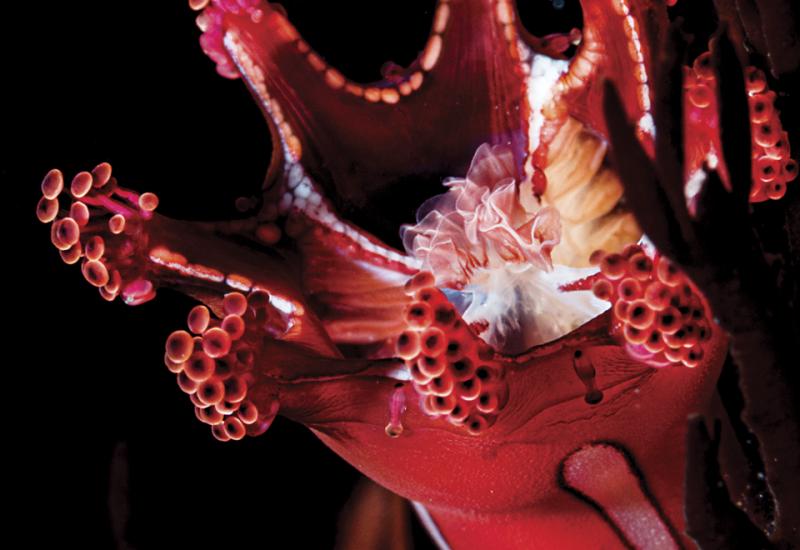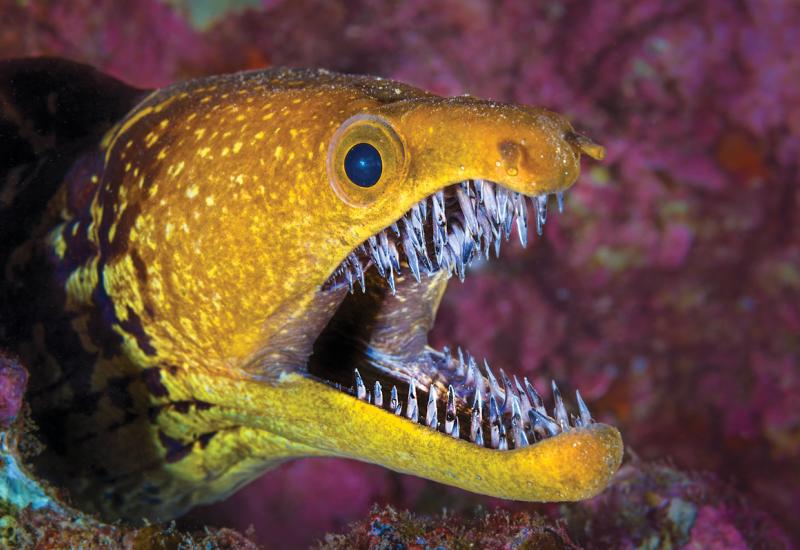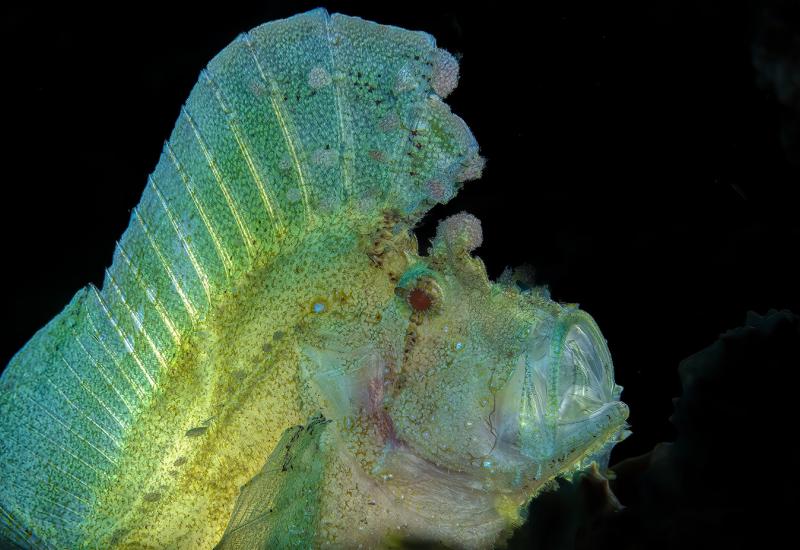These Are the Best Friends in the Ocean
The ocean is more than a fish-eat-fish kind of place. Across many rich marine ecosystems, different species have evolved over hundreds of millions of years to work with each other. These marine “friends” have found ways to not only coexist but provide a benefit to their partner. While these may not be the type of friendships that humans develop, they nonetheless result in incredible interactions that scientists continue to unravel!
Coral and Zooxanthellae Algae
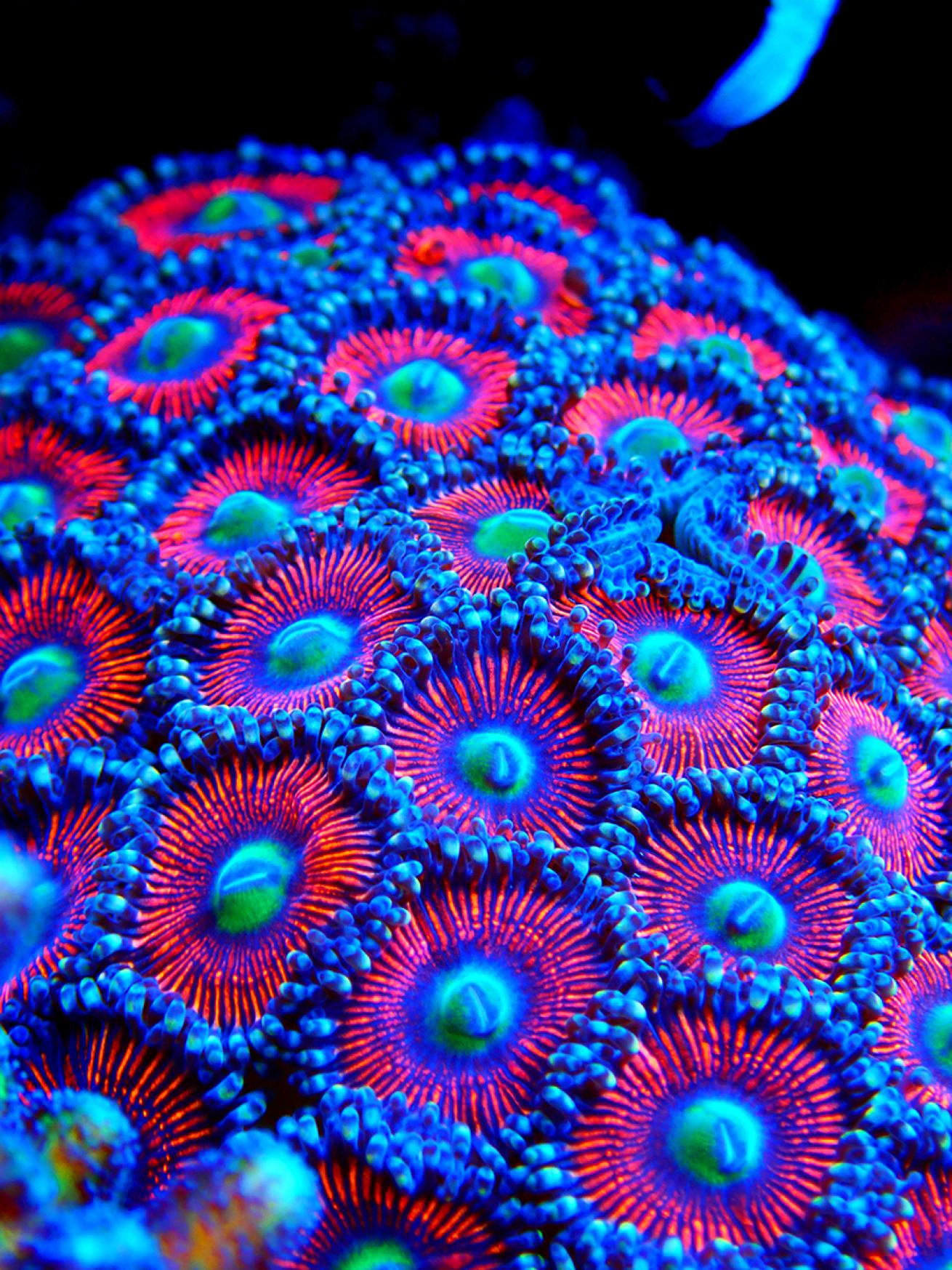
Shutterstock.com/vojceSo close you can't see where one friend ends and the other begins.
Coral reefs are made up of many individual coral polyps, small animals distantly related to jellyfish that clone themselves to create colonies. Coral polyps house zooxanthellae, a microscopic, photosynthetic algae, in one of the world’s most important mutualistic relationships. Algae creates energy from sunlight before giving it to its host coral, and shades coral from the sun. (Coral bleaching is what occurs with the zooxanthellae is expelled or dies off.) Coral, in turn, allow the algae to live inside its cells, gaining protection from other organisms that might eat it.
Sea Anemone and Clownfish
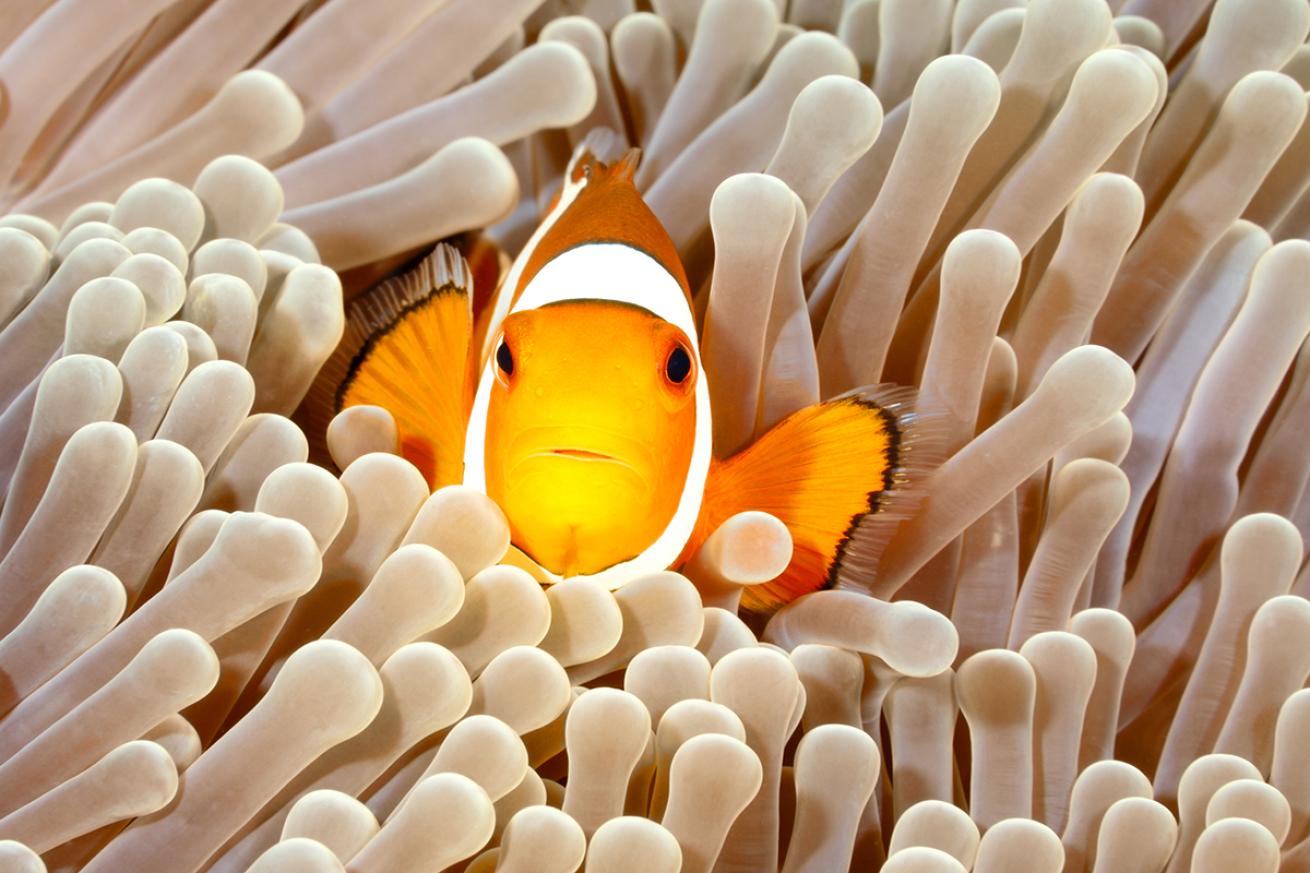
Shutterstock.com/cbpixA house that's more than home — it's friend too!
Perhaps the most famous undersea pairing of species is the sea anemone and its resident clownfish. Sea anemones are animals that live attached to the ocean floor. They eat using long, retractable tentacles that contain stinging cells called nematocysts. Nematocysts release toxins when touched, so small animals that accidentally brush against the tentacles are paralyzed. This makes it easier for the anemone to maneuver them into its mouth to ingest.
Clownfish seem immune to these attacks, swimming freely in and around sea anemone tentacles. They even make the stinging, predatory animals their homes. Clownfish can do this because of a mucus secreted around their bodies that stops nematocysts from firing. Clownfish live comfortably and safely in between the tentacles of anemones, protected from potential predators. They also can eat scraps of food that fall into the anemone.
In return, clownfish provide the anemones with nutrients, such as waste ammonia that helps anemones grow. When swim through anemone tentacles, clownfish also help aerate their host homes. Furthermore, the brightly-colored fish doggedly defend their anemone-homes from potential predators. While clownfish can survive without anemones and often do in fish tanks, where there are no threats, they are more dependent on their best buddy in the wile — when predators are near, clownfish hide in anemones, reliant on their protection.
Cleaner Shrimp and The Animals They Clean
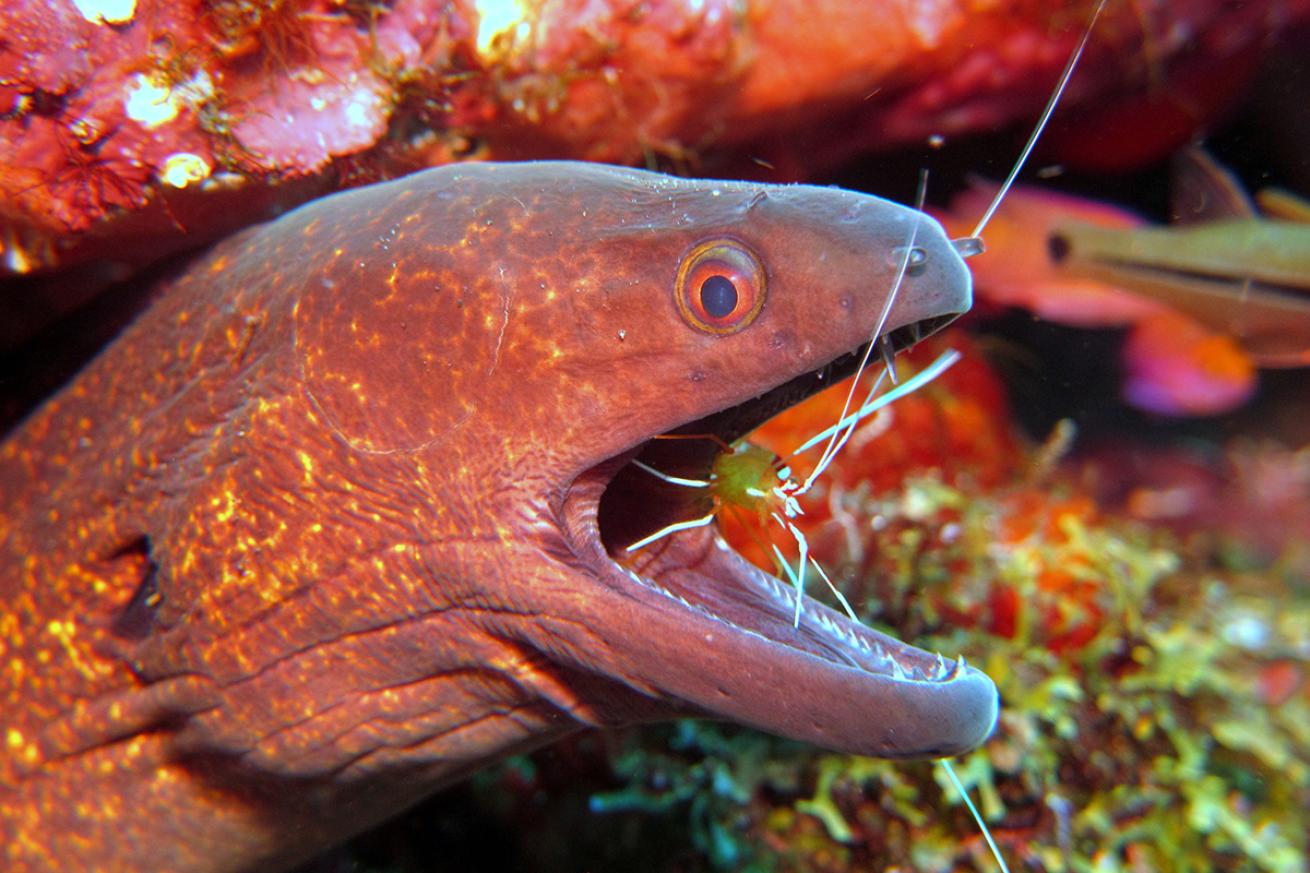
Shutterstock.com/Kristina VackovaTaking "you scratch my back, I scratch yours" to a whole new level.
One of the more interesting symbiotic and mutually beneficial sea friendships is between shrimp and the animals they clean.
You can think of cleaner shrimp as tiny dentists of the sea. They set up “cleaning stations” in rocky grooves and then welcome in “clients,” for whom they pick off parasites and dead skin. These illustrious visitors can include large fish, eels, turtles and even sharks. These much bigger, much stronger animals could eat the cleaner shrimp as a snack; instead, they come, open their mouths and stay still to allow the shrimp to enter and do their thing. The tiny crustaceans eat all the detritus and get a nutritious meal out of it. Their clients get their teeth, gums and/or gills cleaned of pesky parasites and organic build up.
Scientists have found that some species of cleaner shrimp avoid getting eaten by showing discretion in what types of clients they signal towards their cleaning station. Calling in mostly harmless clients, they also make sure to signal to more dangerous animals their intent to help, not be eaten. Some species waive their white-colored front legs in a dance of sorts, indicating that they are there to perform a cleaning service.
Sharks and Remoras
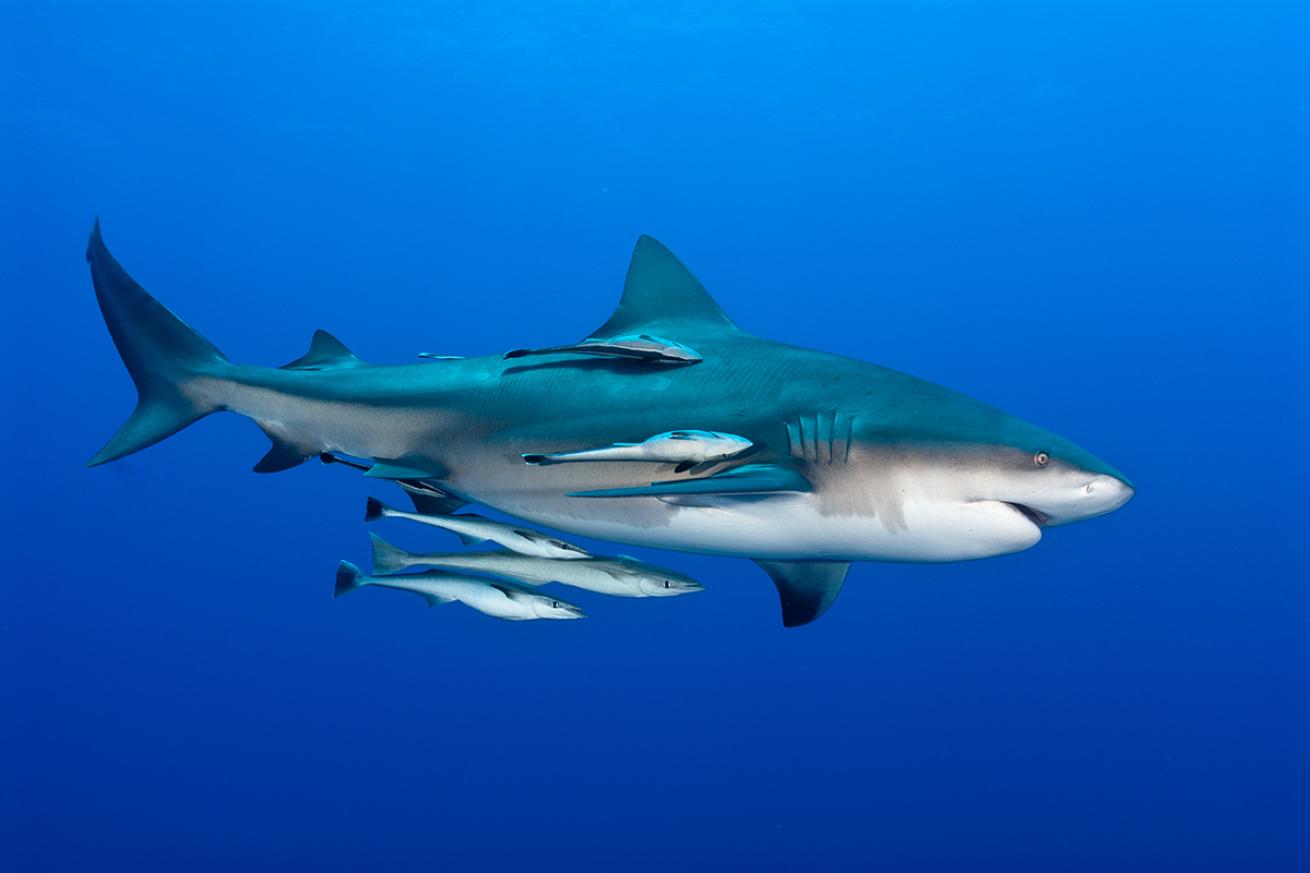
Shutterstock.com/Fiona AyerstThis bullshark knows remoras are friends, not food.
If you’ve ever seen a large shark or manta ray swimming in the ocean, you may have noticed it had tag-a-long remoras swimming near it or attached to it. Over time, the front dorsal fin of remoras have evolved into an organ that acts like a suction cup in their mouths. Using this, they attach themselves to much larger fish and even the occasional diver. Remoras feed off the scraps dropped by their larger hosts and gain protection by hiding alongside them. In return, remoras remove parasites from the skin and mouths of the animals they hitch rides from. This benefits the hosts because marine parasites can irritate or incapacitate animals. Some scientists suggest that sharks have evolved to understand the benefits of their relationship with remora. They observed sharks changing their behaviors in the presence of remoras, slowing down to allow them to attach.

